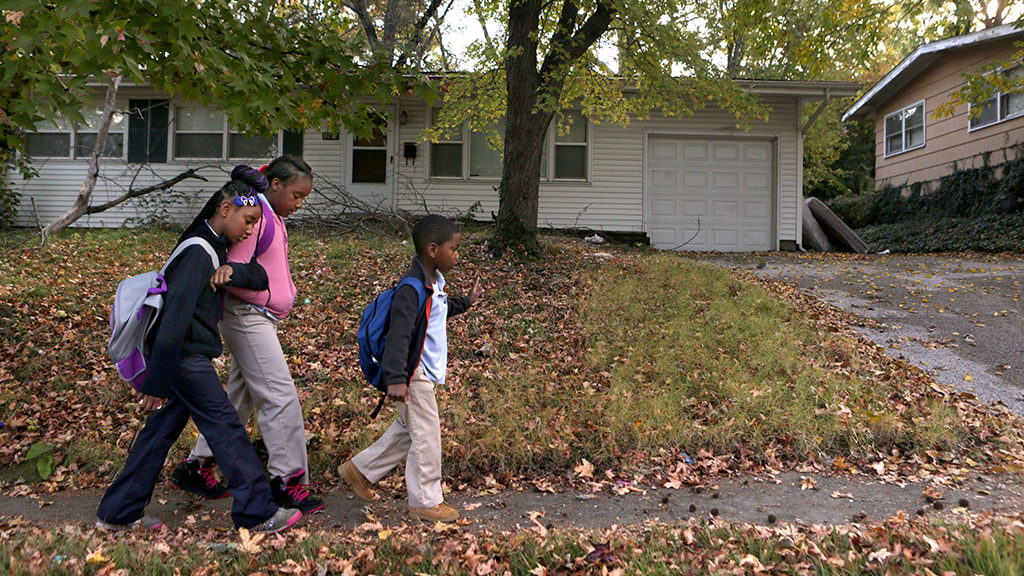The Biological Consequences for Children Living in Poverty… and What We Can Do

*Photo credit: St. Louis Post-Dispatch
In August 2015, fourth-grader Jamyla Bolden was at home working on her homework when a bullet shot through a window and killed her. The neighborhood she had lived in was filled with gun violence, abuse and endless problems. It was also the very same neighborhood where Michael Brown was fatally shot by police only one year earlier.
A St. Louis Post-Dispatch article reveals that in many highly segregated, low-income neighborhoods just like Ferguson, Missouri, a toxic stress epidemic is occurring. Trauma and fear permeate communities where families are living in poverty. As parents become more and more overwhelmed with food and housing insecurity, their children miss out on the nurture and positive interactions they need in order for healthy brain development to occur. These environments of ongoing toxic stress place the health and development of children at risk.
For 15 years, Washington University psychiatrist Joan Luby has used brain imaging to study 90 children living in low-income families in the St. Louis area. Her findings suggest that children who live in poverty and have no positive support system to buffer this toxic stress, have smaller volumes of white and gray brain matter. These areas of the brain are where neural pathways are created. When these connections don’t occur in the brain, children struggle to regulate their emotions, follow directions, problem solve and make decisions.
Luby’s research also reveals a key detail: children who live in poverty, but have an attentive caregiver or positive support system, are less vulnerable to adverse brain development. Those positive relationships and support are what allow a healthy brain to develop and equip children with emotional resilience.
Research surrounding the long-term risk factors of toxic stress has been mounting for years, particularly through the Adverse Childhood Experiences Study (ACEs) which links traumatic childhood experiences to later-life health problems and early death. This science should be influencing public policy, but right now, it’s not. Toxic stress is a preventable health problem, but it requires investment from the general public and civic leaders in the following ways:
- removing biases against people living in poverty who are likely to need services the most
- strengthening family bonds
- knowing trauma symptoms and talking about stress
- empowering caregivers with hope
- teaching parenting strategies
- encouraging wellness
KVC works with children and families from all types of backgrounds who are facing challenges related to income, poverty, transportation or employment. We work to connect families to resources in the community and provide in-home therapy to treat behavioral health issues. In addition to therapy, KVC teaches Parent Management Training (PMT) to families needing assistance improving their parenting strategies so that children can remain safely in the home. All of our staff members have also been trained on Trauma Systems Therapy (TST) in order to care for families who have experienced traumatic stress.
KVC is working to move the needle on difficult social issues including poverty, substance abuse, family discord, trauma, and physical and mental health challenges through a two year initiative called “Change in Mind: Applying Neurosciences to Revitalize Communities.” The initiative is in partnership with the Robert Wood Johnson Foundation and the Palix Foundation’s Alberta Family Wellness Initiative, and is focused on aligning systems and public policy with the latest brain science.
Read the entire St. Louis Post-Dispatch article which includes the crisis, the cycle, the science and solutions for toxic stress: The Crisis Within: How Toxic Stress and Trauma Endanger Our Children




